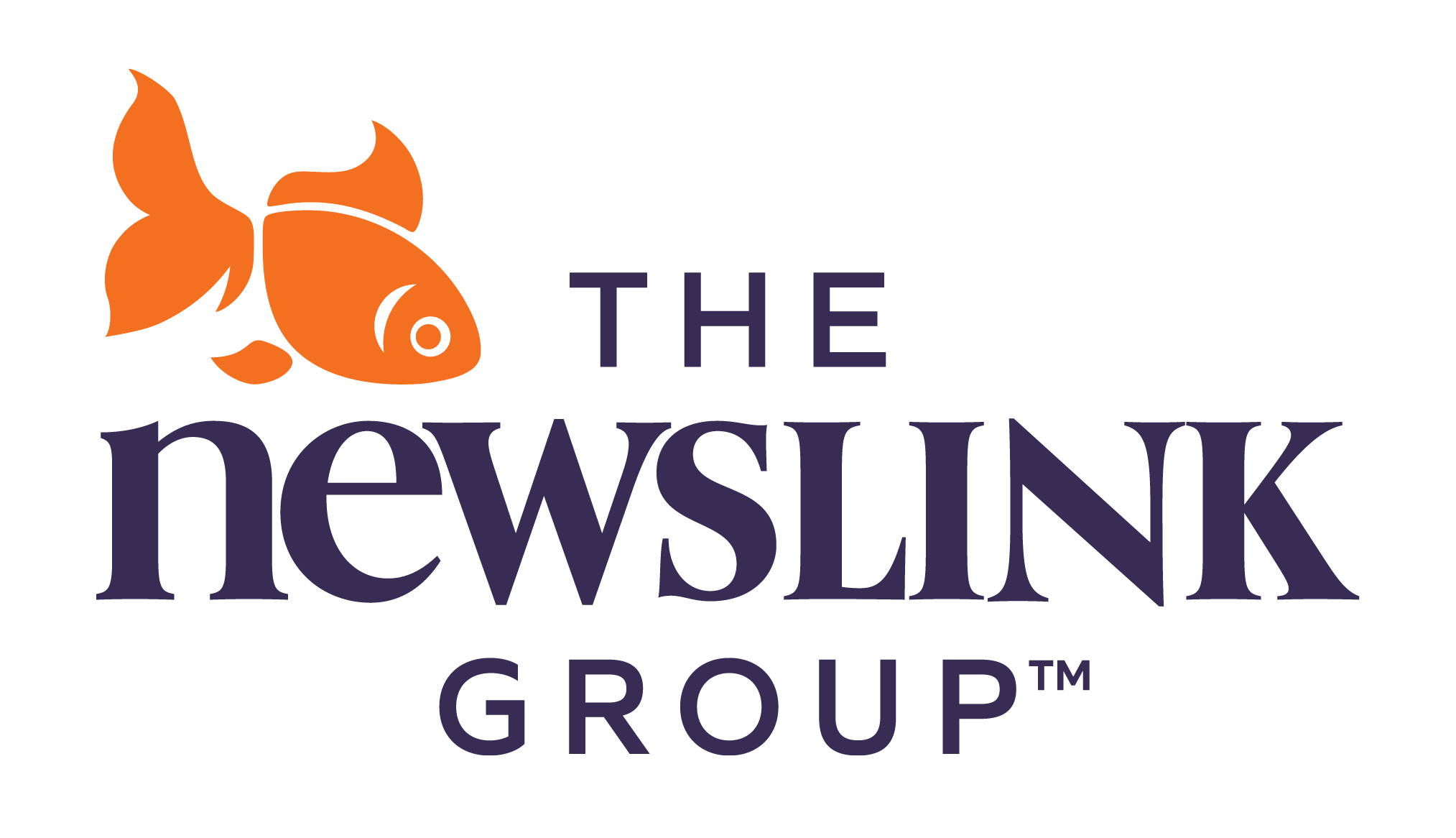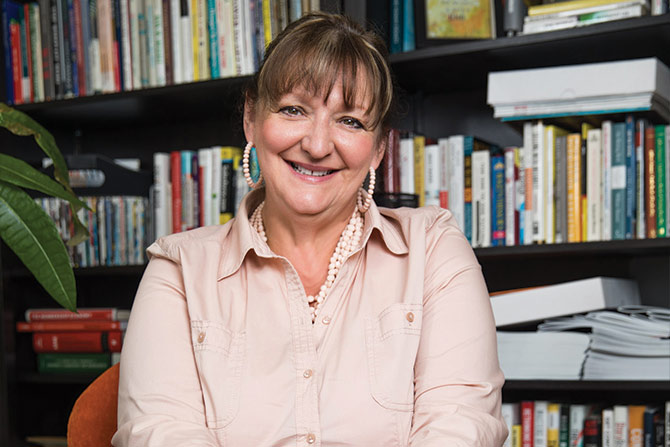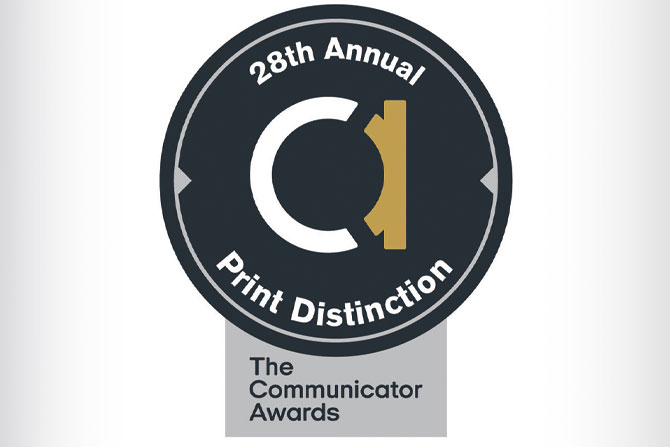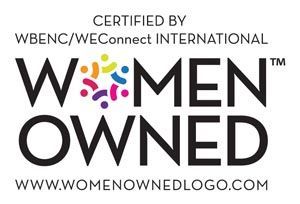As the world has gotten more connected, and smaller, the details that make your organization, board of directors and staff not just real, but unique, is a powerful call for engagement.
Today’s technology makes it very easy to be impersonal, to the point where personal contact has become an anomaly. In a world where we text, email, blog, and send instant messages throughout the day, in 280 characters or less, anything personal makes a lasting impression because it is so rare.
What’s wrong with being impersonal? It is boring, forgettable and, ultimately, ineffective – because we all want apologies in the form of crying emojis, right?
As humans, we relate to the world by constructing stories with beginnings, middles and endings. Our minds naturally construct and remember stories, so no other strategy is as powerful – or as relevant – as telling your story often, consistently, and in as many ways as possible to the right people.
And that’s where our founder and owner, Sophie Hanson and our staff at The newsLINK Group come in. For the past 25 years – long before content marketing was a thing – Sophie has been passionate about telling our clients’ personal stories about why they do what they do. And along the way, she (and the rest of us) has met the most interesting people and helped hundreds of nonprofits and trade associations renew, recruit and retain their members.
Over the past several years, content marketing has had a meteoric rise to the forefront in marketing. It’s the siren song for relevancy, and rightfully so. As the world has gotten more connected, and smaller, the details that make your organization, board of directors and staff not just real, but unique, is a powerful call for engagement. The truth is, people want to do business with those they like, know and trust. In a plugged-in world, authenticity and real, interestingly enough, matter.
Consequently, content surrounds our daily lives. Everyone has jumped on the bandwagon, Google rewards it, consumers crave it, and marketers are trying to find storylines right and left. For a story junkie like Sophie, it’s a marvelous thing. Like Nora Ephron said, “everything is copy.” However, for most, it’s confusing. From a marketing perspective, to be effective, the trick is to strike the right balance and understand your audience.
The newsLINK Group uses print and digital media together to create impactful integrated marketing campaigns for their clients’ membership bases. In an increasingly digital world, print remains a sustainable, tactile and trustworthy tool – essential to any good marketing campaign, or good story for that matter. Print, to Sophie’s delight, is far from dead, and actually thriving. It seems that everyone – from Google to Airbnb – are telling their stories in a print magazine.
Today, in the marketing and communications field, we’re all on a common quest for the elusive holy grail of engagement: Something new. Something original. Something different. And something that will engage our customers, or in The newsLINK Group’s case, their clients’ members. These days, member-based clients are a tough crowd. While many nonprofits and trade associations are thriving, an equal number are not.
Reaching and engaging those elusive members takes work, and it’s not for the faint of heart. People are busy. A lot of the offerings made through nonprofits and trade associations can be found directly on the internet. So can many educational offerings. However, what can’t be found outside of the membership base is the networking – the people part. Their stories. The lessons they have learned. The moments that can – and often did – change everything. Those are the things that can be shared in one of two ways: in person or with a full color, glossy magazine, delivered right into the hands of the members.
A well-crafted story screams real and authentic. And when it’s in print, it adds a tangibility to the experience that engages and grows membership like nothing else. And it’s also why Sophie is still ridiculously excited to show up to work after 25 years in business. After all, a story junkie, is a story junkie, and when they can spend their day in a publishing company, it doesn’t get any better.
Building on her excitement about what we do and how we do it, following is a discussion with Sophie about all the parts of magazine publishing: content building, engaging our clients’ members, and how magazines can become profitable and generate revenue streams.
There’s a lot that goes into magazine publishing. What’s the one thing that seems to rise to the top when people ask about out-sourcing their magazine?
Control and money. Most organizations don’t want to lose control of their narrative – which I completely understand – and want to make sure we honor that concern. Then there’s the question of, can their magazine make money and will they be able to share in those funds? Again, something that I completely understand and want to support in every way we can.
Trade associations do a lot with very little, especially the smaller ones, so everything that has focus needs to be meaningful and provide value.
What’s the story behind implementing the profit-sharing program?
I don’t necessarily know if there’s a story, per se, other than it’s a good idea.
We started profit-sharing several decades ago with a magazine for our very first client. We ended up selling more ads than we needed to, didn’t need the extra money, and decided to split it with them. I was happy about how the whole scenario turned out; the product was great, the profitability of the project was good, and the client used the profit-sharing to fund their PAC efforts.
We still have a good relationship with that client, and we still publish for them. As you can imagine, profit-sharing is a very strong benefit of an association magazine.
Do you have a sense of how many associations would not publish a magazine if they didn’t see profit-sharing?
No, because there are many ways a magazine can benefit an association. It’s a mistake to think that “no cash” means “no value.” I think of profit-sharing as frosting on an amazing cake. It’s nice. It’s appreciated but probably not necessary as it’s the member dues and engagement that keep an association financially healthy.
Some companies supplement limited brick-and-mortar stores with a beautiful catalog, like Pottery Barn, Williams-Sonoma, J. Jill and Sundance. These companies might have a few outlets, too, but the catalog is a huge asset. People like to relax and browse through high-end catalogs when they have some time. There’s no pressure and no rush. Some companies sell a lot of merchandise through their catalogs because clients buy more when they are relaxed.
It’s no different with a good association magazine. Our magazines are beautiful, professional and interesting, the ads are relevant to the members, and the magazines themselves become great association ambassadors that generate goodwill. The products being sold are seminars and webinars instead of clothing and home furnishings, but really, the magazine functions the same way a good catalog does. As a result, we have plenty of clients – enough to keep us very busy – and many publishing awards for the quality of our work.
Tell us about the nuts and bolts of the profit-sharing program.
An average magazine is 32 pages long and has an audience of approximately 850 members. The general cost categories necessary to create a magazine are overhead, commissions, layout, printing and postage. We always sell ads to the best of our ability because we can’t stay in business unless we cover our costs. Making money on a magazine is about the total annual volume, not just the volume for one issue, and the number and cost of the ads in each magazine are based on breaking even by the end of the year.
We need to have a general idea about how much money we need to make, so we go through our costs annually and deconstruct our expenses for the previous year to ensure our ad rates are reasonable. Doing that gives us our goals. It doesn’t make sense to check more frequently because some magazine issues are more challenging than others. A client may come to us and say, “Hey, we need our magazine to be 42 pages for this issue, and we are handing it out at our annual convention to potential members, so we need 200 extra copies.” If a client does ask for something extra like that, we’ll say “yes.” And, that same year, we might do another issue that costs less to publish.
Every client is eligible for profit-sharing. If we can sell extra ads, we deduct the commission and split the remainder with the client. Profit-sharing occurs at the end of the contract year because we don’t know how big a check to write until then. We regularly write checks to associations for $3,000 to $15,000 per year.
Profit-sharing doesn’t have to be money. It can take different forms, but the specifics depend on what the association wants. For example, some associations say “thank you” to their big sponsors by giving them space in the magazine or ads that would otherwise cost money to run. Another option is to take that money and add pages or issues to an existing magazine.
One or two of our clients like to give away ads, where each ad has a dollar amount attached to it. For example, they might give a quarter-page ad to every member in a particular membership category. An ad is probably worth at least $300, so everyone takes an ad when the association offers it to them. Some clients will give an ad to members if those members become, say, a bronze sponsor. Then the association makes money from the sponsorship. It’s a way to create value without exchanging actual dollars.
We would go out of business if people didn’t pay for their ads, but sometimes we can help out an association if we structure the agreement to make sense for them and us. Profit-sharing in the form of ads only makes sense if we’ve already covered the cost of making the magazine.
Is profit-sharing typical in the association magazine industry?
There were only three or four companies that did what we did when we started business, and we were all pretty small. One competitor wasn’t sharing profits, but I don’t know about the others. Profit-sharing has become very common since then. That makes sense because it’s good business. However, even if a magazine doesn’t have any profits, the magazine still adds to the association’s bottom line because it’s another way to bring the association to its members.
How many associations are eligible? And how many of the ones that are eligible take advantage of it?
About three-fourths of our clients enjoy some form of profit-sharing. The remaining fourth still benefits because their magazine helps them create a product marketplace and a strong sense of community.
Most clients want cash, but some associations want to give their members more of the magazine by increasing the number of pages or issues. They want members to see what their dues are buying them. We know our magazines make associations stronger and more vibrant even if we don’t send them profit-sharing checks. The checks are just a bonus.
Belonging to an association is intangible, but having a magazine is a way to make association benefits tangible. A good magazine reminds everyone what the association does, including the board members. It can increase a member’s sense of belonging to a community, provide networking and educational opportunities, and let members know what is happening even if they cannot attend events. Magazines can also promote sponsors and sell products and services.
What are the advantages of increasing the number of published issues or page count instead?
It’s a big compliment when a client tells us they would rather increase the magazine’s scope than cash a profit-sharing check. For us, it means the client is looking toward using their magazine as the communication ambassador that we love to see any magazine become.
The reality is it’s becoming harder and harder for any organization to engage with clients and associations aren’t any different. Relevant communication is tough to manage, and I personally believe a magazine is a big help when it comes to member engagement. Magazines show up in offices and homes across the country and manage to capture the attention of some very busy people – these people would be very difficult to see face-to-face for association staff unless they were engaged – and relay important association news, educational content and coverage of events. A magazine brings the association to its members, and in our busy and focus-challenged world, that’s, in my mind, one of the most important jobs of a magazine. A magazine reminds members why they pay dues.
Do you have any stories about how the program has helped some of our associations?
We have really benefited some of the smaller associations. For example, there is an executive vice president in Montana. His association just finished its first year with us and is starting its second. He treats us like a partner, makes smart deals and brainstorms with us. Everyone got behind the magazine. The magazine was well-received and made money the very first year, which doesn’t usually happen. Everyone is happy about the outcome, and the magazine received an award for distinction in publishing. He told me, “I should have said ‘yes’ to you guys a long time ago.”
Those are the kind of outcomes that I love. And what makes the day-to-day so rewarding.
What can you tell us that we haven’t already covered?
People join associations to meet other people. Magazines are valuable for many reasons, but they are a wonderful way to create a community and help people within the association become friends. It takes time to put a good magazine together, and associations have to invest some effort into coming up with good content — but, we can and love to help with content creation. However, it’s all worthwhile if you look at everything a good magazine accomplishes.
Magazines check off a lot of boxes. For example, we’ve talked about how a magazine can make money for the association. But the most important work a magazine does isn’t about money; it’s about relationships. Our magazines create stronger association communities.
One example of this is our many member interviews. Most people like recognition and want to have some say in their legacy. If they are working in an industry that has been good to them, they want to pay it forward and make a difference in other people’s lives. They want their life to matter, and they usually appreciate a chance to talk about their journey.
We have interviewed some truly remarkable people. We love doing interviews because they give people a chance to share their values, insights and advice. Interviews are a way to mentor people outside their closest circles and increase their connection to the larger community.
Suppose a member goes to a meeting or convention for the first time and doesn’t know anyone yet. If the new member has looked through the magazine, they will have some topics to discuss and may even find someone to start a conversation with, especially if a person we interviewed is there, too. The new member will know who the other member is and a little about their life because the interview has photos and personal stories or experiences.
Even when the pandemic prevented members from attending meetings or conventions, reading their association’s magazine made them feel like they were still part of the community. They get to see what’s going on and hear about their association peers.
As I said previously, association magazines are goodwill ambassadors. The potential to make money on top of that is a bonus.








